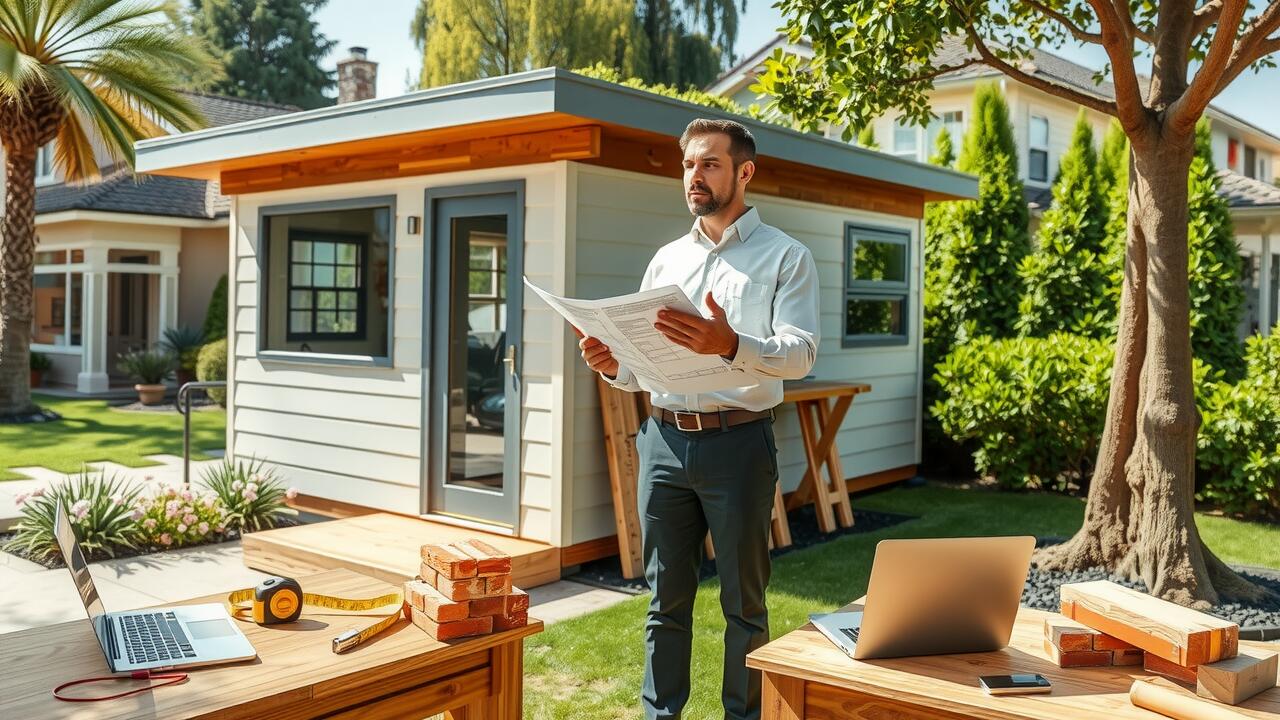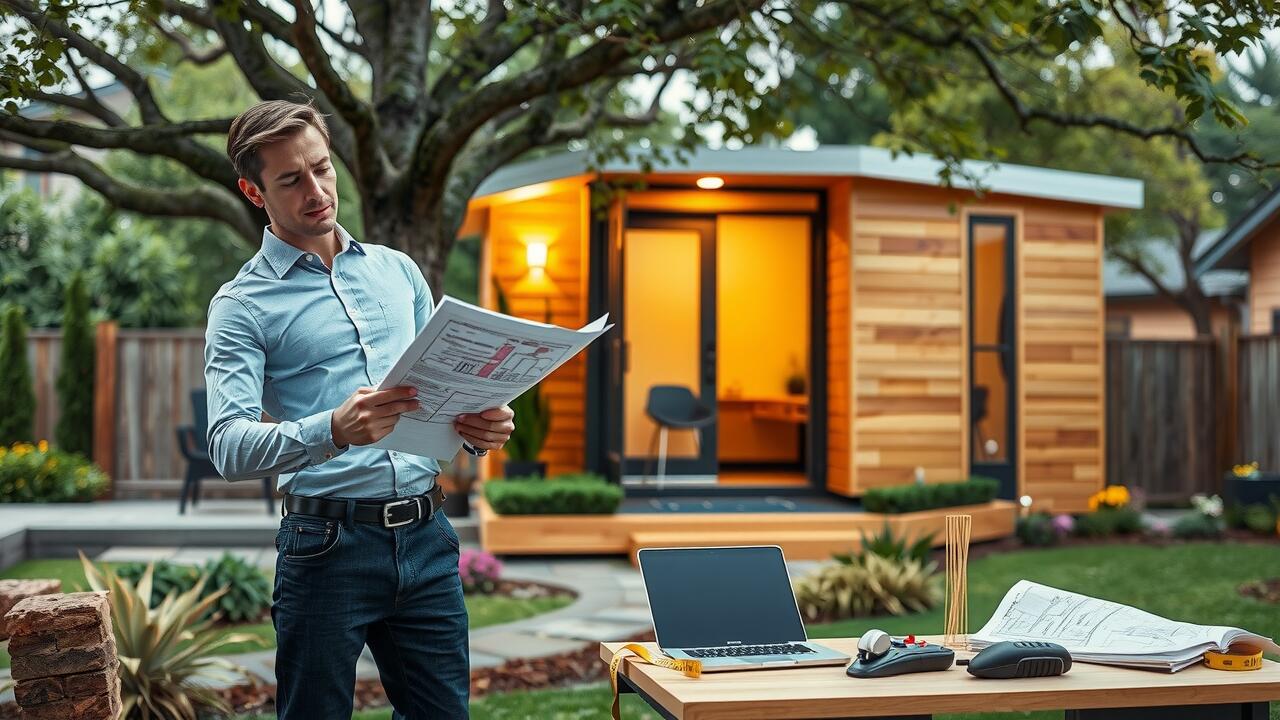
Table Of Contents
Space Planning Considerations
When planning the space for an Accessory Dwelling Unit (ADU in Valencia, Santa Clarita), it’s essential to consider the intended use of the space. This planning phase determines the layout and design for maximizing functionality. Consider how many people will utilize the unit and what specific needs it should fulfill, whether for guests, family, or rental purposes. The design should allow for enough privacy while still creating a welcoming atmosphere.
Additionally, local zoning laws and building regulations can influence size and layout decisions. Understanding these guidelines ensures that the ADU remains compliant while meeting personal needs. Efficient use of space can lead to greater livability, enabling residents to feel comfortable and functional within the unit. Consideration of future needs is also valuable, as families grow or change preferences over time, impacting the optimal size and configuration of the ADU in Valencia, Santa Clarita.
Maximizing Functionality
When planning an accessory dwelling unit, maximizing functionality is essential. A well-designed ADU in Waltz, Santa Clarita, can serve multiple purposes, from a home office to guest accommodations. Efficient space planning is crucial; incorporating features such as foldable furniture, built-in storage, and smart layouts can make even smaller units feel spacious. Identifying your primary use for the ADU will help guide decisions on layout and amenities, ensuring the space caters to your specific needs.
Separating spaces can enhance usability while maintaining an open atmosphere. For instance, a combined living and kitchen area encourages interaction, while designated sleeping and work zones provide privacy. Consider including flexible features, like movable partitions or convertible furniture, which adapt to various activities throughout the day. These thoughtful design choices enable an ADU in Waltz, Santa Clarita, to be both functional and comfortable, making the most out of every square foot.
Budgeting for ADU Size
When budgeting for an ADU in Humphreys, Santa Clarita, it’s essential to consider not just the initial construction costs but also ongoing expenses. The size of the unit can significantly impact both material and labor costs, so understanding the trade-offs between square footage and budget limitations is crucial. Owners should account for utilities, property taxes, and potential zoning fees which may arise based on the size and scope of the project.
Potential homeowners should also explore financing options that align with their budget. Depending on the desired dimensions of the ADU in Humphreys, Santa Clarita, costs may vary widely. Smaller units often come with lower expenses, while larger, more customized designs can lead to increased financial outlays. Gathering estimates from contractors and analyzing the benefit of various sizes relative to financial capability helps in making an informed decision.
Cost Implications of Different Sizes
The size of an accessory dwelling unit (ADU in Canyon Country, Santa Clarita) significantly affects the overall budget. Generally, larger ADUs require more materials and labor, which can drive up the initial construction costs. Additionally, they may incur higher permitting fees and impact fees, especially in areas with strict zoning regulations. Homeowners should consider these financial implications when determining the right size for their ADU.
However, the long-term financial benefits of a properly sized ADU can outweigh these initial costs. A thoughtfully designed ADU can enhance property value and provide rental income opportunities. Choosing a size that balances personal needs and the potential for future income can lead to a more advantageous investment. Understanding the cost dynamics associated with different sizes is essential for making an informed decision that aligns with both current and future financial goals.
Customization Opportunities
Customization in an accessory dwelling unit can greatly enhance its utility and appeal. Homeowners have the chance to incorporate features that align with their unique lifestyles. Whether it’s a spacious home office, an art studio, or guest accommodations, the design should reflect individual needs. Those considering an ADU in Newhall, Santa Clarita, can explore various layout options and finishes, ensuring that every square foot serves a purpose.
Additionally, customizing an ADU allows for personal touches that can increase its value. Selecting specific materials, colors, and fixtures can create a cohesive aesthetic with the main home. This attention to detail transforms the structure into an integrated part of the property. Homeowners can also benefit from tailored storage solutions, outdoor spaces, and energy-efficient installations, all of which can enhance not just functionality but the overall enjoyment of the ADU in Newhall, Santa Clarita.
Tailoring Size to Personal Needs
Tailoring the size of an accessory dwelling unit (ADU) to personal needs is essential for ensuring functionality and comfort. Individuals should consider how they plan to use the space. Whether the ADU will serve as a guest house, a rental unit, or a personal studio, each use demands different spatial requirements. For example, a compact design may be suitable for a short-term rental while a more spacious layout might better accommodate family members.
Personal lifestyle preferences also play a significant role in determining the ideal ADU size. For instance, if someone prioritizes outdoor living, a smaller interior might be offset by a larger patio or deck area. When planning an ADU in Canyon Country, Santa Clarita, it is important to account for the local climate and available outdoor space, as this may influence both the desired size and design of the unit. Each decision should reflect the unique needs of the homeowner, ensuring a tailored fit that enhances living quality.
FAQS
What is an ADU?
An ADU, or Accessory Dwelling Unit, is a secondary housing unit on a single-family residential lot. It can be a detached structure, a portion of the main house, or an apartment within a garage.
What size is considered a good ADU?
A good size for an ADU typically ranges from 400 to 1,200 square feet, depending on local zoning regulations and the intended use of the unit. It’s important to balance space with functionality.
How do I determine the right size for my ADU?
The right size for your ADU depends on your needs, budget, and the space available on your property. Consider factors like intended use (rental, guest space, etc.), the number of occupants, and how to maximize functionality.
What are the cost implications of different ADU sizes?
Generally, larger ADUs will have higher construction and maintenance costs. It’s essential to create a budget that considers the costs of materials, utilities, and any additional features you want to include based on the size of your ADU.
Can I customize the size of my ADU based on my personal needs?
Yes, customization is one of the significant benefits of building an ADU. You can tailor the size to meet your personal needs and preferences, ensuring that it serves its intended purpose effectively.


